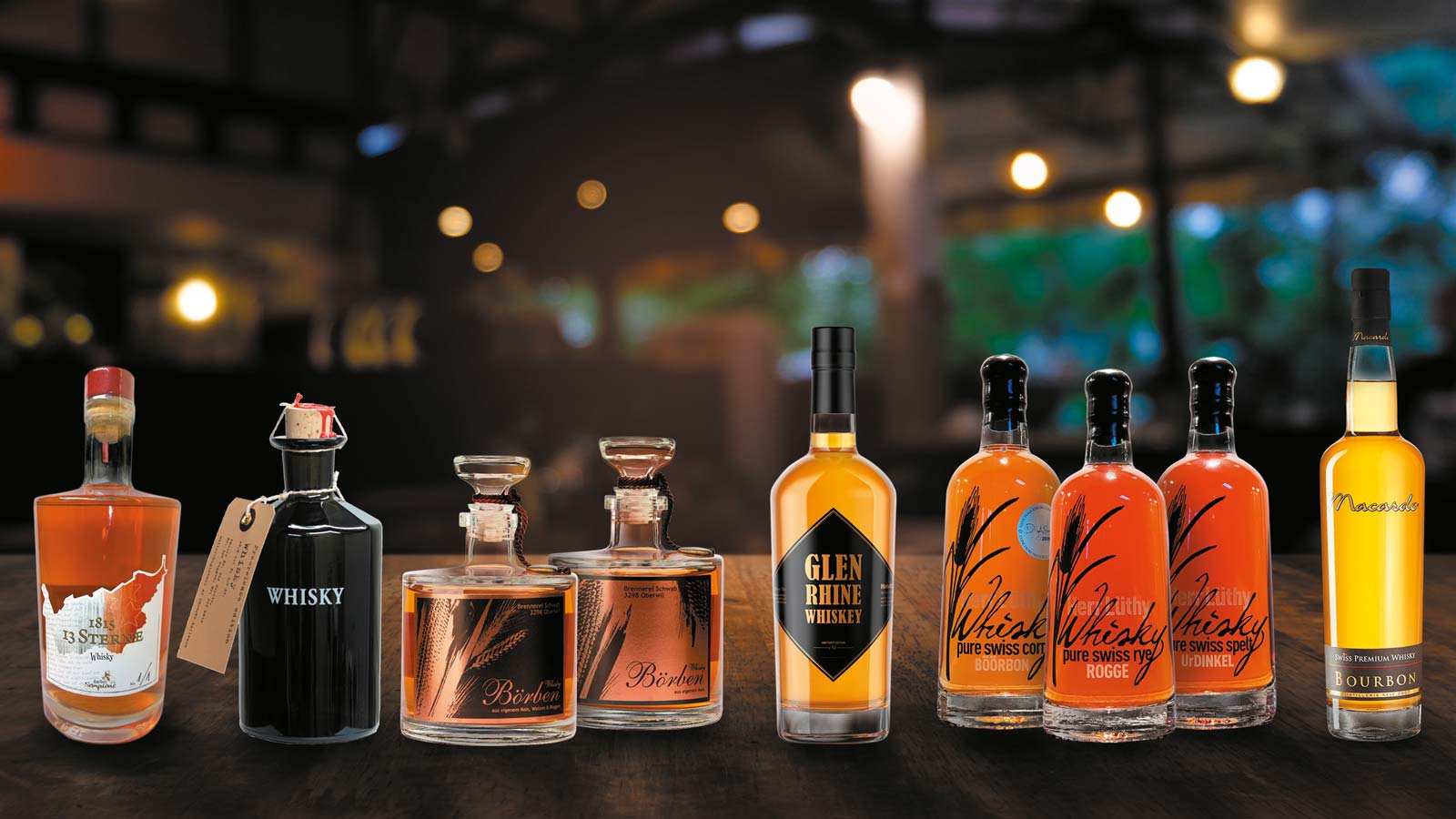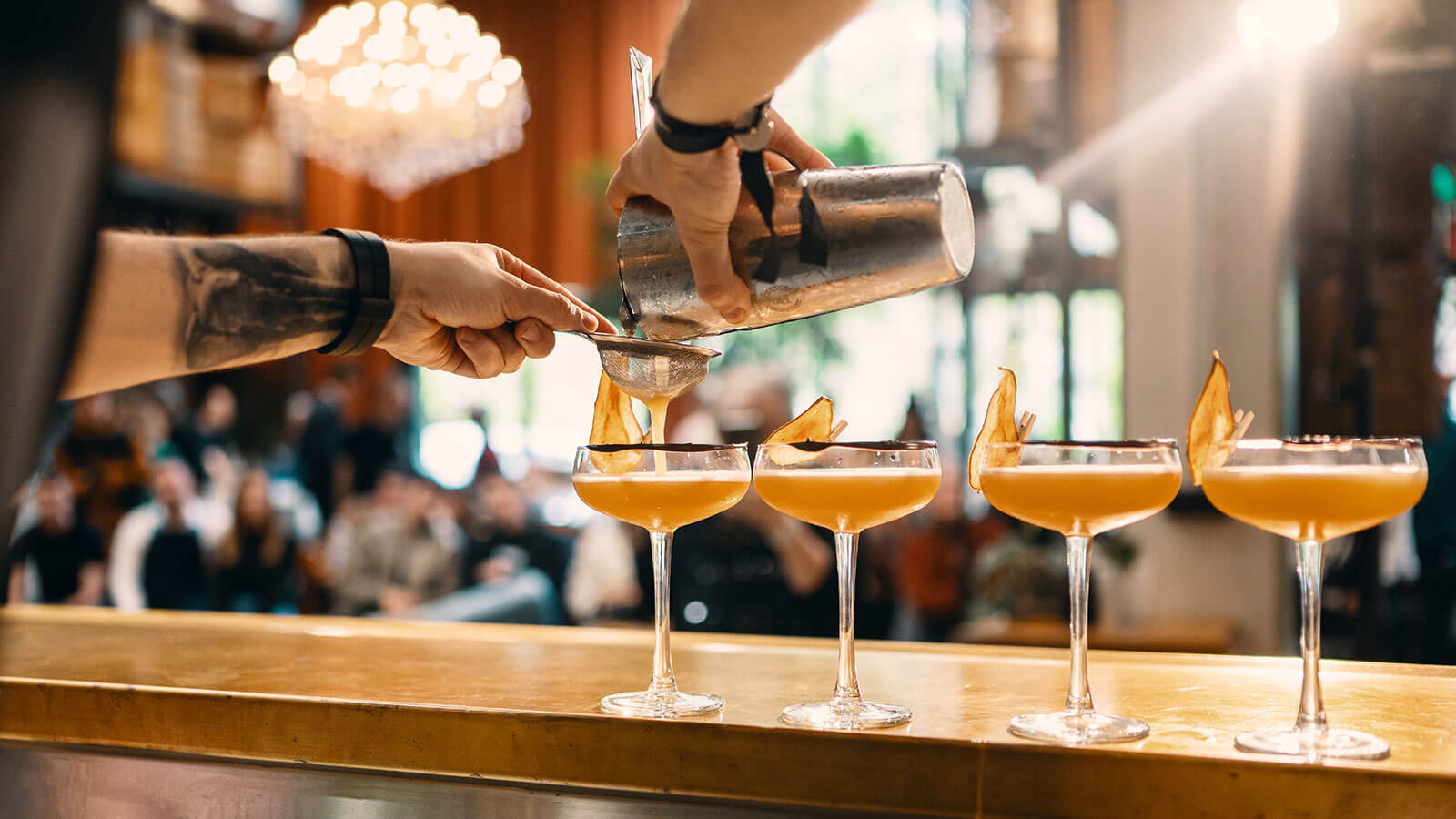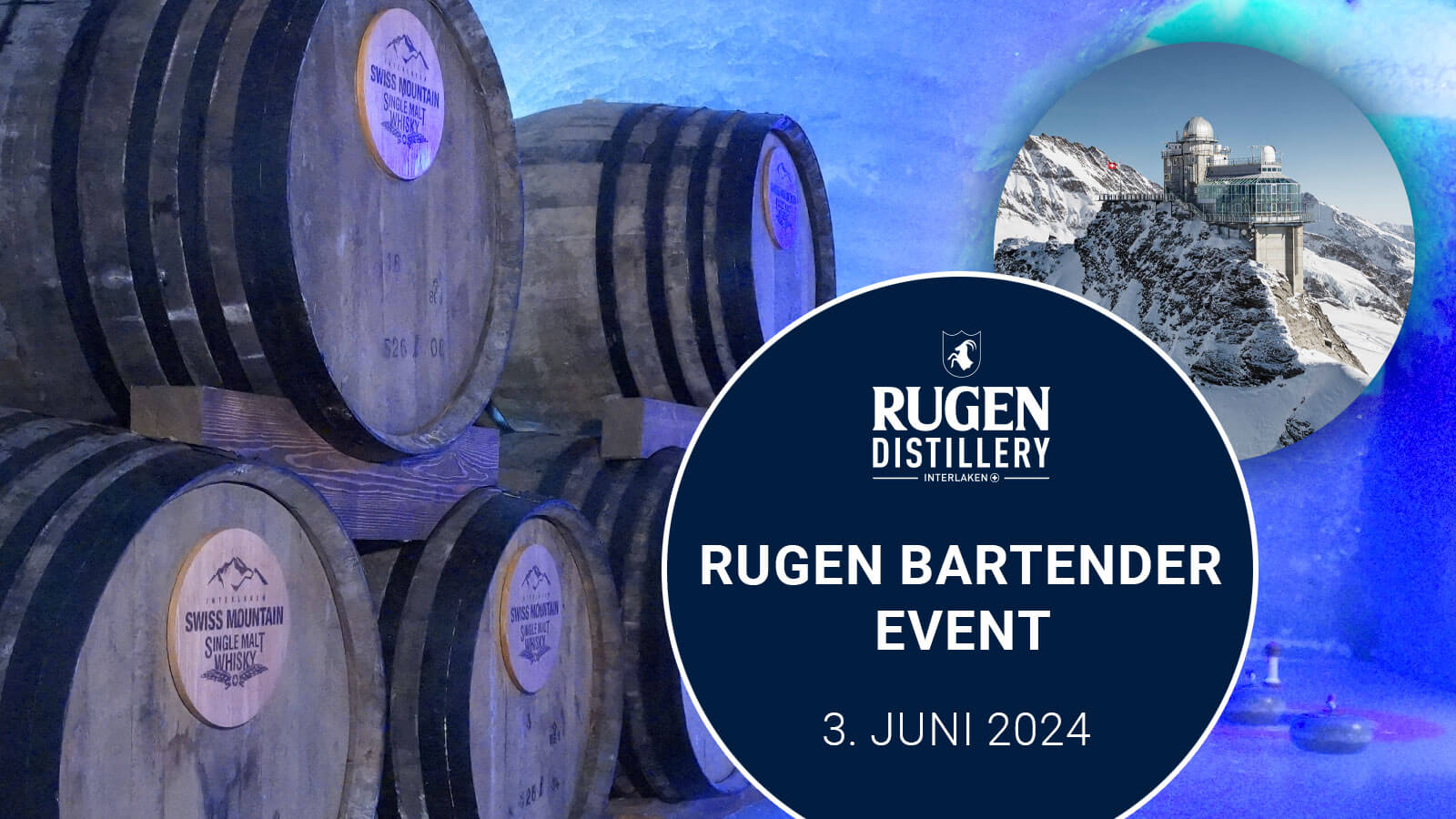The production of whisk(e)y takes time. A lot of time. Big investments and risks are associated with each filled barrel - even more so when you can't draw on hundreds of years of experience distilling grain spirits, ageing in oak barrels and blending them into ever-present flavour profiles.
Swiss whisky - a category that has just come of age, because before 1 July 1999 it was forbidden to distil grain in Switzerland. And a whisk(e)y is not a whisk(e)y if the grain distillate has not been aged in a wooden barrel for at least three years.
It is hardly surprising that the local producers first oriented themselves towards Scottish single malts. Twenty years ago, brands such as Jack Daniel's, Jim Beam or Four Roses were still to be found in bars, but these whiskeys rarely met with a response, except from guests from America. Scotch was the trend, the highest of feelings: single malt.
Yet the American style would have brought some advantages for Swiss producers. Unlike its Scottish cousins, bourbon and co. are stored in new oak barrels and usually at much milder temperatures than in the Scottish Highlands.
While most flagship single malts from Scottish distilleries are aged somewhere between 10 and 16 years, most American whiskeys are ready for consumption much earlier.
Local grain, local handicraft
The American style has other advantages. Distilleries can use local grain, for example, because malting barley from Switzerland is the exception, not the norm. To convert the starch in maize, rye, wheat or even typical Swiss grains such as spelt into fermentable sugar, added enzymes can be used, which also eliminates the need for malting.
It is not uncommon for Swiss whisky producers to outsource the production of distillers' beer, or the wash. For the Buechisberger single malt from the Schwab distillery, for example, the distillery works with Burgdorfer Bier. For their "Bourbon", however, all production steps take place in-house, because the technical infrastructure for boiling the mash was already in place.
At Matter Spirits, too, the entire production of its limited-edition corn, rye and blended whiskies takes place in-house, and from November 2020, Macardo Distillerie, which produces its "Bourbon" in Strohwilen, Thurgau, will no longer be dependent on a brewery as a partner.
When it comes to distillation, Swiss whisky producers differ from Scottish or American producers in sheer size alone. While the latter produce large quantities much more efficiently thanks to the continuous column still process, Scottish wash stills sometimes have capacities that exceed the distillation ports of local producers by a factor of a hundred.
Whisky or whiskey?
Whisk(e)ys from Ireland and the USA are usually called whiskey (with an "e"), whereas in Scotland they write whisky without an "e". Most Swiss distillers also use the term whisky - even if the base is made from corn or rye. Exceptions are Glen Rhine (Kobelt) or Old Mustang (Langatun).
Another difference is that most Swiss producers distil the mash. Exceptions are the 1815 - 13 star whiskey from Sempione Distillery in Brig or the Glen Rhine Whiskey from Kobelt. The latter distils the wort that was brewed at Sonnenbräu.
The smaller quantities offer scope for experimentation, also in terms of the use of the barrels during storage. New, charred American oak barrels are used as well as ex-wine barrels or Swiss oak barrels.
The new interest in bourbon and rye offers new opportunities for Swiss whisky producers. If the quality is right, guests from Switzerland and abroad are happy to try something new.
When you see the qualities that are already on the market today, and how many producers who have not yet had any whisk(e)y on offer will soon be filling their barrels with distillates made from maize, rye and other grains, you can confidently forecast a rosy future for fully matured Swiss whisk(e)y.





